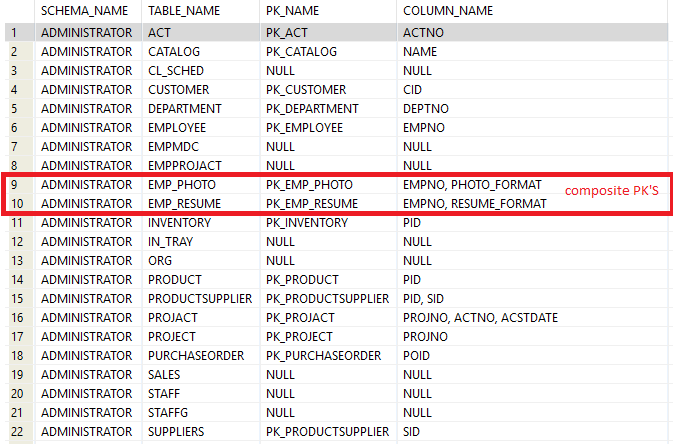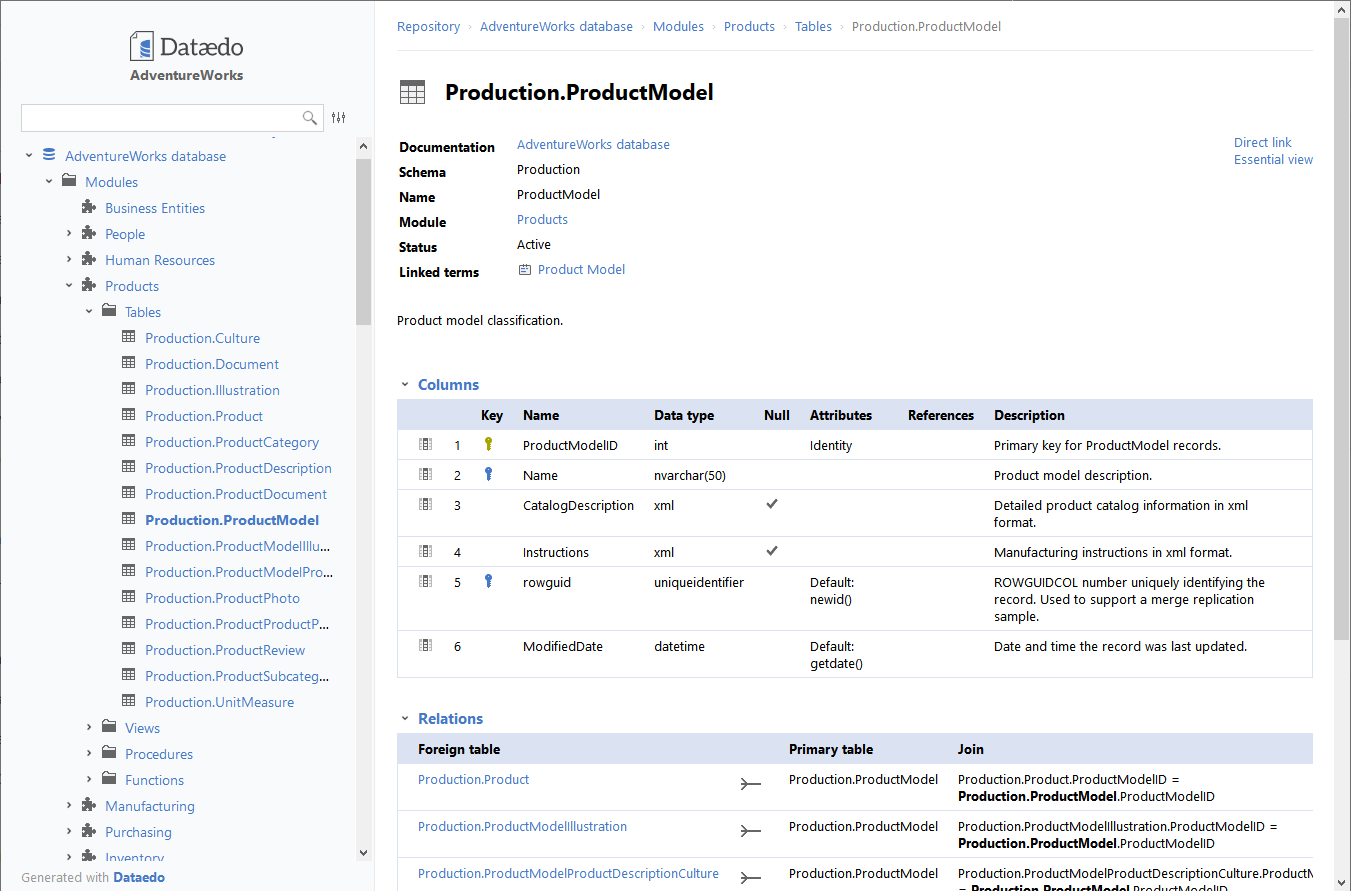Query below lists tables and their primary key (PK) constraint names. By browsing list you can spot which tables have and which don't have primary keys.
See also: tables without primary keys.
Query
select tab.tabschema as schema_name,
tab.tabname as table_name,
const.constname as pk_name,
listagg(key.colname, ', ')
within group(order by key.colseq) as column_name
from
syscat.tables tab
left outer join syscat.tabconst const
on const.tabschema = tab.tabschema
and const.tabname = tab.tabname and const.type = 'P'
left outer join syscat.keycoluse key
on const.tabschema = key.tabschema
and const.tabname = key.tabname
and const.constname = key.constname
where tab.type = 'T'
and tab.tabschema not like 'SYS%'
group by tab.tabschema, const.constname, tab.tabname
order by tab.tabschema, tab.tabname
Columns
- schema_name - schema name
- table_name - table name
- pk_name - primary key constraint name
- columns - list of PK columns separated with ','
Rows
- One row represents one table in a database
- Scope of rows: all tables in a database
- Ordered by schema, table name
Sample results
You can see what are the names of PK constraints for each table and which tables don't have PKs at all (in SAMPLE database).

You could also get this
Get this interactive HTML data dictionary in minutes with Dataedo.












 Marcin Nagly
Marcin Nagly